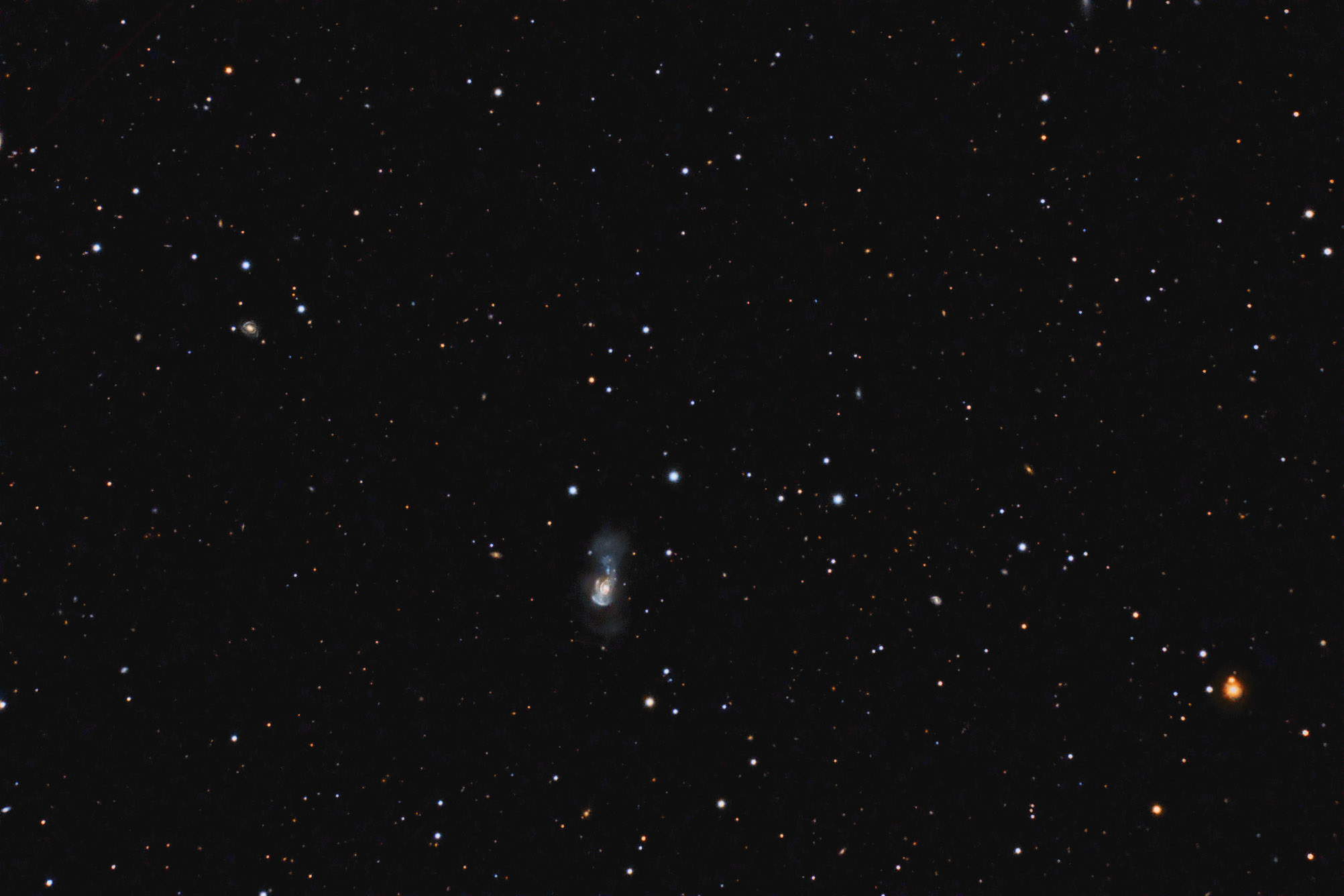Object name: ARP160Designation(s): ARP160, MEDUSA, Arp 160 was in the news after an image of it combining white light data from Hubble and X-ray data from Chandra has been recently released and picked up by many astronomy news websites. I imaged it the night before the image was released so have rushed it to the top of the processing list.
Arp 160 is known as the Medusa Galaxies though Arp never even knew it was two galaxies. He considered it one and classed it as a galaxy not classifiable as "either elliptical or spiral that is disturbed with interior absorption". In fact, it is two galaxies that are in the process of merging. The fan-shaped blue object above and the spiral-like, mostly reddish object below. Using Chandra's X-ray vision (better than Superman's) the black hole that was at the core of the upper galaxy has been spotted proving it is two galaxies.
The Chandra press release is at:
http://chandra.harvard.edu/photo/2009/medusa/
I had a heck of a time processing this image as there was a 5th magnitude star just out of frame at the top right that must have hit something reflective in the camera. It sent ghost images all over the field. Many overlapped. It took me a couple days work to remove them. In doing so I lost faint parts of the image but none involving Arp 160. Which is also known as NGC 4194 and is in Ursa Major. It was discovered by William Herschel on April 2, 1791. It isn't in either Herschel 400 observing program.
Arp's image with the 200" Palomar scope is at:
http://ned.ipac.caltech.edu/level5/Arp/Figures/big_arp160.jpeg
Film has far less dynamic range than today's digital sensors so the core is burned out in Arp's image loosing the spiral nature of that region in an attempt to show the fainter parts.
14" LX200R @ f/10, L=4x10' RGB=2x10', STL-11000XM, Paramount ME Related Designation(s):1RXS J121411.8+543204, 2MASX J12140957+5431360, 2MASXi J1214098+543139, 6C B121141.9+544811, 87GB 121144.0+544823, 87GB[BWE91] 1211+5448, AKARI J1214100+543136, ARP 160, ARP160, ASK 239339.0, BTS 103, CGCG 1211.6+5448, CGCG 269-043, CGPG 1211.6+5448, GB6 J1214+5431, I Zw 033, IRAS 12116+5448, IRAS F12116+5448, LQAC 183+054 009, MCG +09-20-119, MEDUSA, Medusa merger, MRK 0201, NGC 4194, NGC 4194:[KA2008] 2, NSA 041597, NVSS J121409+543135, PGC 039068, SBS 1211+548, SDSS J121409.45+543136.5, SDSS J121409.46+543136.6, SDSS J121409.47+543136.6, SDSS J121409.63+543135.8, TXS 1211+548, UGC 07241, UNAM-KIAS 0881, UZC J121409.6+543136, VV 261, [dML87] 654, [UIY2014] 20, [VCV2001] J121409.7+543135, [VCV2006] J121409.7+543135, [WB92] 1211+5448, | | 
